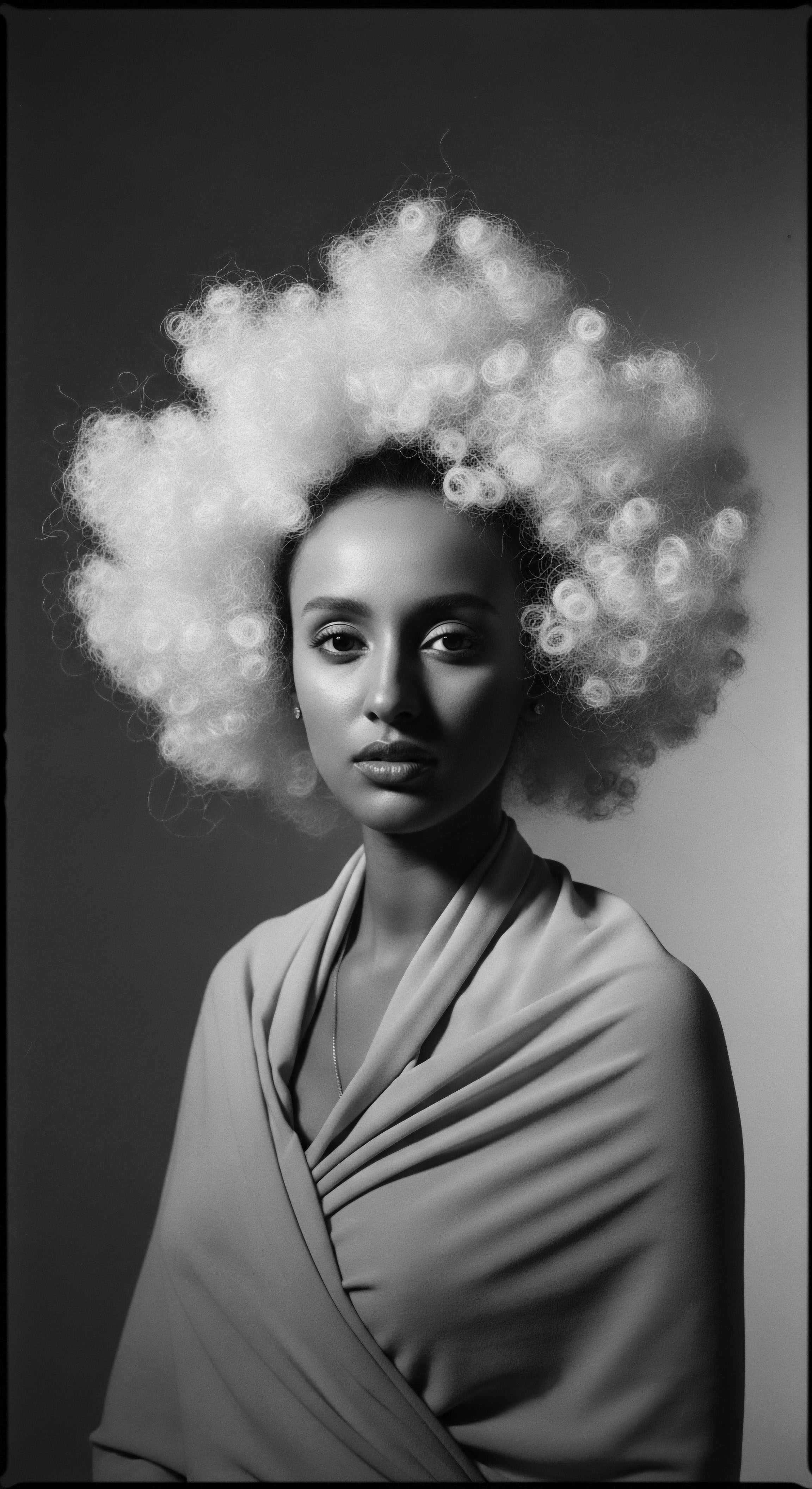
Fundamentals
The deep, resonant understanding of hair health risks, particularly for textured strands, begins not as a distant clinical observation, but as an echo from the very source of our being—the follicle itself. Each curl, coil, and wave, shaped by heritage and lineage, carries a unique story and an inherent architecture. The elemental meaning of ‘Hair Health Risks’ within this ancestral context refers to any condition, practice, or external influence that disrupts the intrinsic vitality and structural integrity of the hair shaft and the nurturing environment of the scalp. It encompasses a spectrum, from the subtle daily stressors to more profound, systemic challenges that can diminish the hair’s natural resilience.
A strand, whether tightly coiled or gently waved, emerges from its follicular wellspring bearing specific characteristics that dictate its journey through the world. The elliptical shape of the follicle in textured hair, for instance, gives rise to a strand with an inherent bend, creating points along its length that can be more susceptible to mechanical friction or breakage. This intrinsic curvature, a magnificent gift of genetic inheritance, simultaneously requires a nuanced approach to care, differing significantly from the straight strands of other lineages. When moisture, that lifeblood of textured hair, is insufficient, or when physical manipulation exceeds the hair’s natural elasticity, these risks become manifest as brittleness, fracture, or dullness.
Ancestral wisdom, passed down through generations, often intuitively grasped these fundamental truths about hair’s vulnerabilities. Early practices were frequently centered on protective measures, recognizing the delicate balance required to maintain a thriving crown. These were not merely cosmetic rituals; they were acts of preservation, acts of honoring the hair’s inherent nature. From the deliberate oiling of strands to the creation of intricate styles that minimized exposure and manipulation, these traditions stood as bulwarks against the earliest recognized health risks, often long before modern science articulated the precise biological mechanisms.
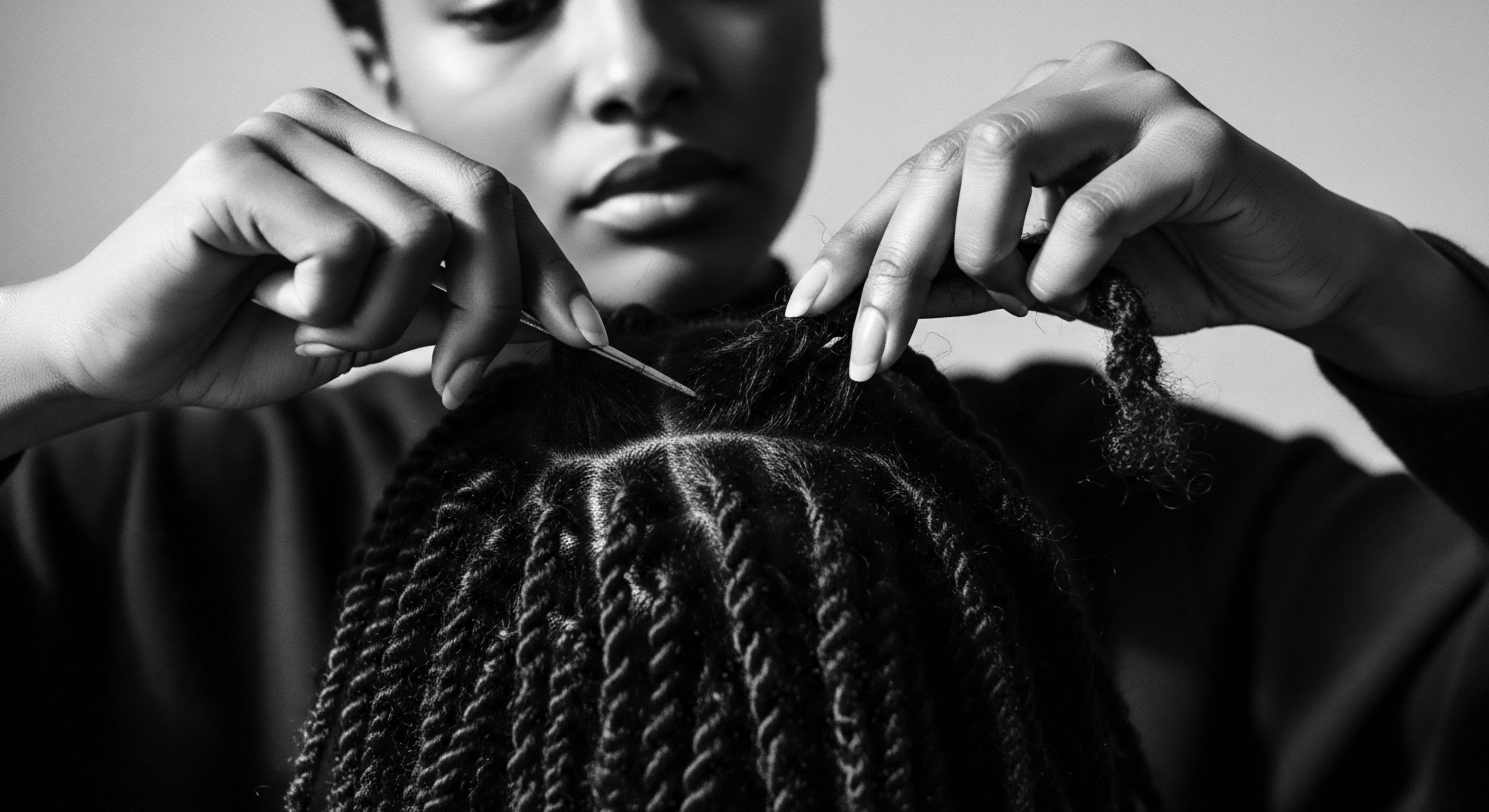
The Sacred Strand’s Vulnerabilities
To truly comprehend the initial meaning of hair health risks for textured hair, one must look closely at its elemental composition and form. The outermost layer, the cuticle, acts as a protective shield, much like the scales of a venerable serpent. When these scales are lifted or damaged, the inner cortex, home to the hair’s strength and pigment, becomes exposed. For textured hair, the very twists and turns of the strand mean cuticle scales can be naturally more raised at the points of curvature, rendering them more prone to snagging or drying out.
- Dryness ❉ The inherent structure of textured hair often makes it more challenging for natural scalp oils to travel down the spiraling shaft, leading to a predisposition for dryness. This lack of moisture significantly elevates the risk of breakage and reduces the hair’s natural suppleness.
- Mechanical Stress ❉ The delicate points of turns within the curl pattern are areas of heightened vulnerability. Combing, brushing, styling, or even friction from fabrics can create tension at these junctures, leading to the physical fracturing of the hair fiber.
- Environmental Exposure ❉ Unprotected, hair can succumb to external aggressors such as harsh sun, wind, or dry air. These elements can strip away moisture and weaken the hair’s structural integrity, hastening its decline.
Thus, at its foundational level, hair health risks describe the myriad ways the hair, particularly the textured strand, can be compromised, whether through its natural predispositions or through inadequate care. The earliest forms of this understanding were rooted in observation and the collective wisdom of communities who understood hair as a living, breathing entity demanding respectful interaction.
Hair health risks, for textured strands, begin with understanding the inherent structure and the ancestral knowledge that guided its protection.

Intermediate
Moving beyond the foundational understanding, the intermediate exploration of Hair Health Risks deepens its significance, connecting it inextricably to the cultural currents and historical tides that have shaped the experiences of textured hair across the diaspora. This level of insight recognizes that the risks to our hair are not solely biological; they are profoundly intertwined with the pressures of assimilation, the evolution of beauty standards, and the very tools and rituals adopted, or imposed, over generations. The meaning of ‘Hair Health Risks’ expands here to encompass the detrimental impact of practices born from necessity, aspiration, or even coercion, which, while perhaps aiming for societal acceptance or ease of management, inadvertently compromised the hair’s vitality.
Consider the era when European beauty ideals, often enforced through colonial structures, began to overshadow traditional African hair aesthetics. This shift, particularly in the Americas and the Caribbean, introduced a new category of risks ❉ those associated with altering the natural texture to conform. Early attempts at straightening, driven by a desire for acceptance or survival within oppressive systems, involved crude and often dangerous methods.
The hot comb, for example, while revolutionary for its time, brought with it the risk of severe thermal damage, scalp burns, and long-term hair weakening when improperly used. It represented a compromise—a bridge between the ancestral desire for groomed hair and the imposed reality of a straightened aesthetic.
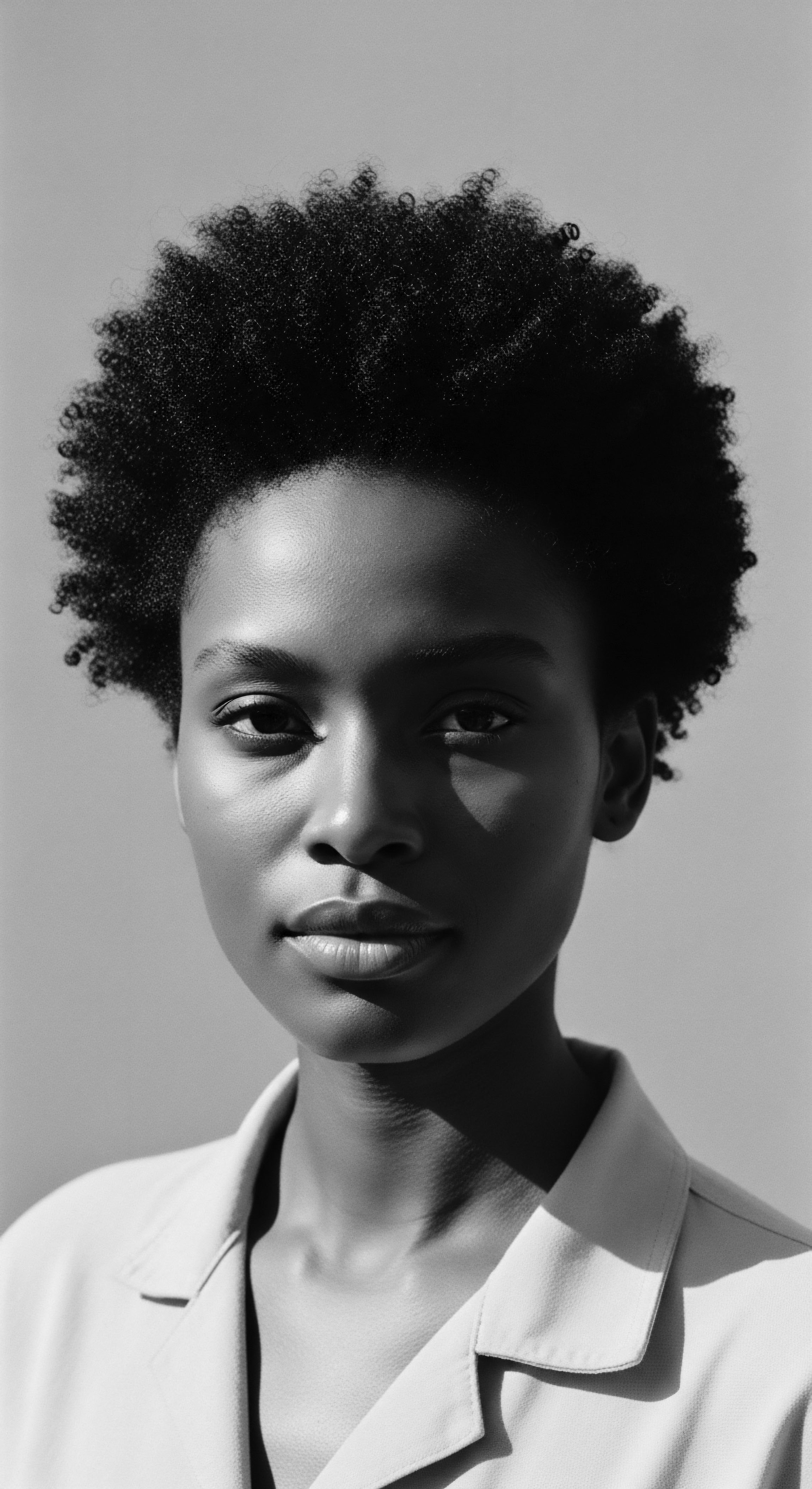
The Weight of Conformity ❉ Historical Tools and Practices
The introduction of tools and techniques aimed at altering the natural texture of textured hair brought forth a cascade of new vulnerabilities. These were not merely styling choices; they were often responses to deeply entrenched biases against natural Black hair. The quest for “good hair” – a tragically loaded term often equating to straighter textures – spurred innovation in hair manipulation, some of which had profound and lasting health implications.
The narrative around hair, its meaning, and its societal acceptance became a complex interplay of personal identity and external pressure. Hair health risks, in this intermediate scope, began to signify the damage incurred from relentless straightening, the burning of scalp from overheating implements, and the gradual erosion of hair’s natural strength and moisture barrier.
| Era / Practice Pre-Colonial Ancestral Braiding |
| Description Diverse protective styles, often incorporating natural fibers and emollients, symbolizing status and heritage. |
| Associated Hair Health Risks Minimal risks, primarily from infrequent cleansing or overly tight tension in some elaborate ceremonial styles if not balanced. |
| Era / Practice Early 20th Century Hot Comb Usage |
| Description Metal comb heated and passed through hair with pomade to achieve temporary straightening. |
| Associated Hair Health Risks Thermal burns to scalp, dryness, breakage from excessive heat, follicle damage, and progressive weakening of hair. |
| Era / Practice Mid-20th Century Lye Relaxers (Early Formulations) |
| Description Highly alkaline chemical solutions applied to hair to permanently break disulfide bonds, resulting in straight hair. |
| Associated Hair Health Risks Severe scalp burns, chemical alopecia, irreversible cuticle damage, extreme dryness, and hair thinning over time. |
| Era / Practice Understanding these historical transitions reveals how external pressures often shaped hair care into practices that introduced significant health risks. |
The concept of protective styles, a timeless wisdom, gained renewed importance as a counterpoint to these new risks. Braids, twists, and locs, which had always served as cultural markers, increasingly became recognized for their ability to safeguard the hair from external harm and excessive manipulation, thereby mitigating some of the emergent health risks. This was a testament to the ancestral understanding that hair, when given the space to flourish in its natural state, possessed an inherent protective capacity.
Moreover, the intermediate perspective on hair health risks necessitates an examination of ingredients. As commercial products became more prevalent, a new range of chemical exposures entered the hair care lexicon. Petroleum jelly, mineral oils, and early synthetic fragrances, while seemingly offering solutions for manageability and shine, often created barriers that prevented true moisture absorption, leading to chronic dryness and an environment conducive to flaking or build-up. The simple meaning of ‘health’ for hair began to contend with the unforeseen consequences of these modern innovations.
The intermediate understanding of hair health risks unveils the cultural pressures and historical tools that introduced new vulnerabilities to textured hair, often in the pursuit of conformity.
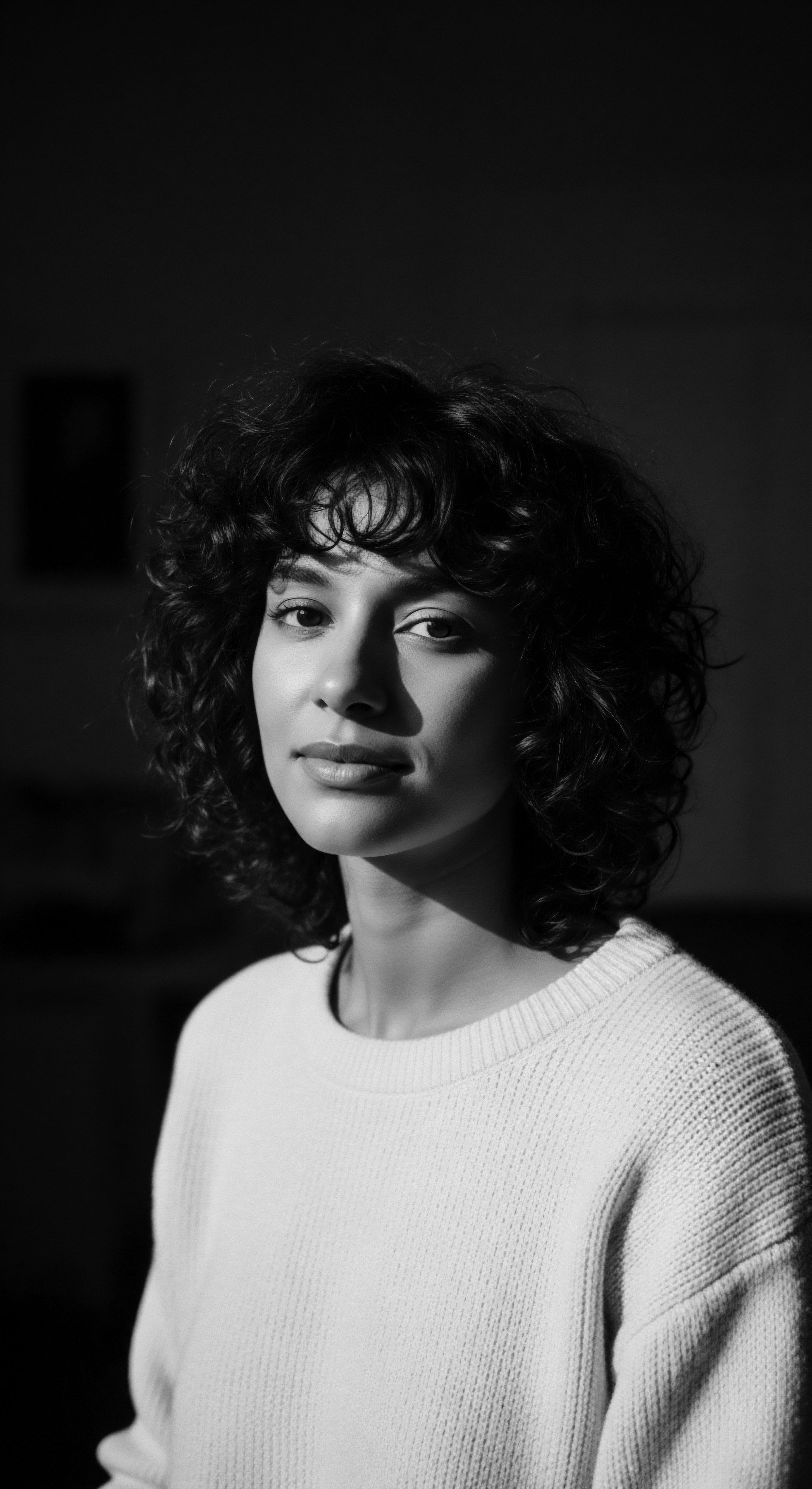
Academic
At the academic zenith, the meaning of ‘Hair Health Risks’ transcends mere cosmetic concern; it becomes a profoundly complex, interdisciplinary area of study, particularly when focusing on textured hair within its rich, often tumultuous, heritage. Here, its elucidation necessitates a rigorous examination of biological vulnerability, coupled with an unflinching look at the psychosocial and systemic factors that have historically and contemporaneously shaped hair practices and outcomes. This interpretation draws from fields as diverse as dermatology, endocrinology, environmental science, sociology, and cultural anthropology, presenting a comprehensive delineation of how risk manifests and impacts health for individuals and communities of color.
The very structure of textured hair, characterized by its unique elliptical cross-section and numerous bends along the shaft, renders it inherently more prone to certain forms of damage. These structural intricacies mean that natural sebum struggles to coat the entire strand, contributing to a predisposition for dryness. Furthermore, the points of curvature represent areas of diminished mechanical strength, making the hair more susceptible to breakage under tension or friction. This biological reality, while foundational, is profoundly compounded by external forces.
A critical and often under-examined aspect of Hair Health Risks within the heritage of Black and mixed-race hair lies in the pervasive and deeply damaging impact of chemical straighteners. For generations, the pursuit of straightened hair was not merely a stylistic choice; it was a societal imperative, often linked to economic opportunity, social acceptance, and protection from discrimination. This historical burden pushed countless individuals towards practices that, while achieving a desired aesthetic, exacted a severe biological toll.
Early relaxer formulations, often utilizing high concentrations of lye (sodium hydroxide), were overtly caustic, capable of inducing severe chemical burns, irreversible scalp damage, and progressive hair loss. Even “no-lye” formulations, containing guanidine hydroxide, still operate at highly alkaline pH levels, capable of denaturing proteins and lipids within the hair and scalp.
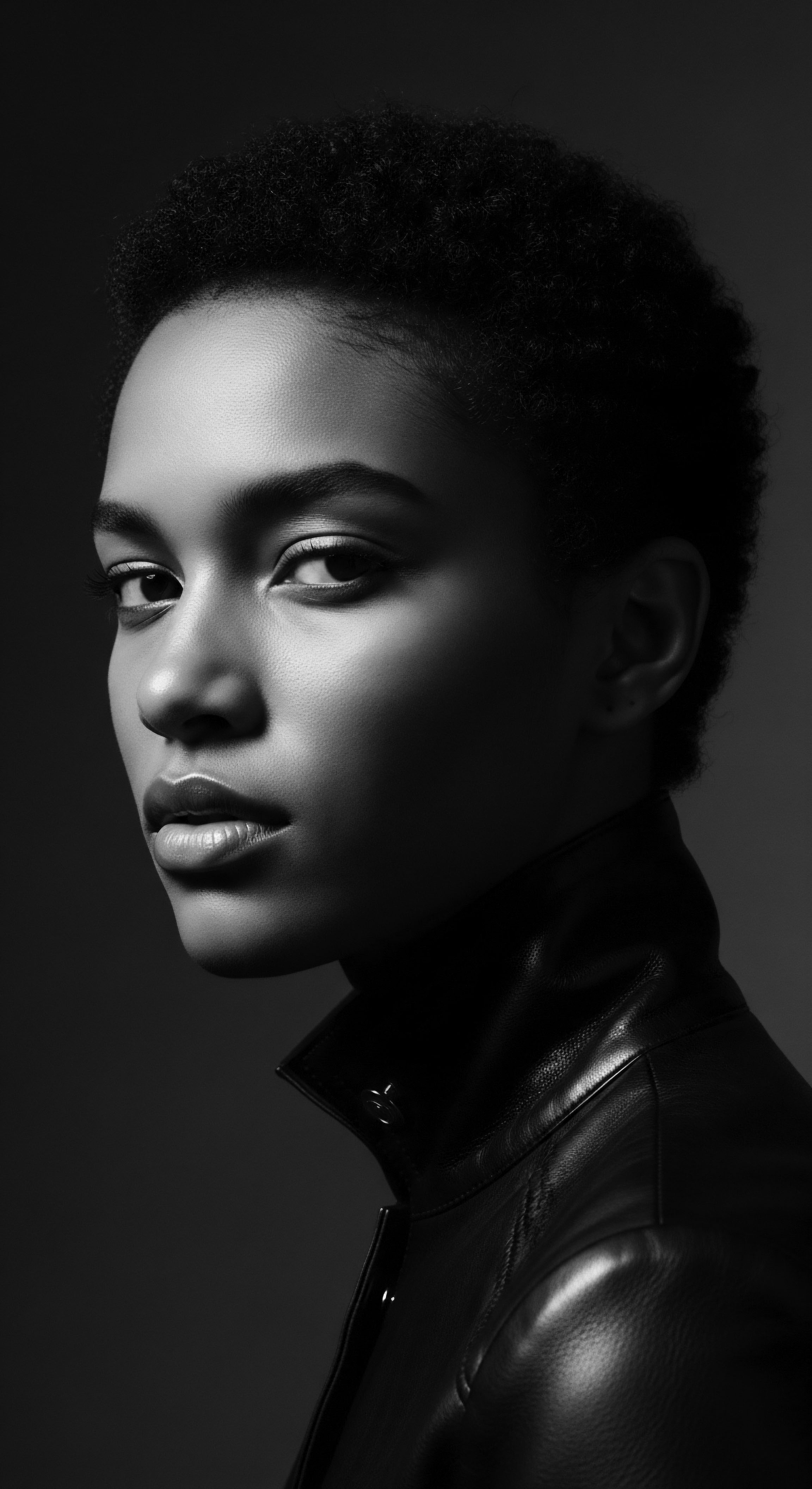
The Silent Epidemic ❉ Chemical Relaxers and Systemic Health
The long-term implications of these chemical exposures are not confined to the hair and scalp. Recent academic inquiry has begun to reveal more profound, systemic health consequences, transforming our understanding of hair health risks from localized dermatological issues to broader public health concerns. One particularly compelling and unsettling body of research points to a potential link between the frequent use of chemical hair relaxers and an increased risk of uterine fibroids among Black women.
Uterine leiomyomata, commonly known as fibroids, are non-cancerous growths of the uterus that can cause debilitating pain, heavy bleeding, and infertility. Black women experience fibroids at disproportionately higher rates, often with earlier onset and more severe symptoms, compared to women of other racial backgrounds.
A pivotal study published in the Journal of the National Cancer Institute by Coogan, Palmer, et al. (2021) , analyzing data from the Black Women’s Health Study, provided significant evidence in this domain. Their prospective cohort study, involving tens of thousands of Black women followed over decades, observed that frequent use of chemical hair relaxers—defined as at least five times per year for five or more years—was significantly associated with an elevated risk of uterine fibroids. This research posits that chemicals like phthalates and phenols, often present in hair relaxers and known endocrine disruptors, may play a role in this increased risk.
These compounds can mimic or interfere with the body’s natural hormones, potentially influencing the growth of hormone-sensitive tissues like the uterus. The findings from Coogan, Palmer, et al. (2021) underscore a critical, previously under-appreciated dimension of hair health risks ❉ that the very products used for cosmetic purposes, often driven by a historical imperative for straight hair, carry insidious implications for systemic health, extending beyond the hair itself.
Academic understanding of hair health risks for textured hair unveils a complex interplay of biological vulnerabilities, psychosocial pressures, and systemic health implications, particularly from practices like chemical straightening.
This complex interplay constitutes a profound challenge to wellness, as individuals faced a choice between societal conformity and personal health. The historical context explains why these choices were made, often out of survival, but the scientific data now unequivocally highlights the tangible, adverse outcomes. The interconnected incidences across fields are stark ❉ the beauty industry’s pursuit of specific aesthetics, the historical legacy of racialized beauty standards, and the resulting biological consequences converge to shape this definition of risk.

Beyond Chemicals ❉ A Spectrum of Risks
While chemical risks hold a central place in the academic examination of textured hair health, other categories of risks require equally rigorous scrutiny:
- Thermal Damage ❉ The sustained application of high heat, whether from hot combs, flat irons, or blow dryers, induces structural changes in the hair. At a molecular level, excessive heat can denature keratin proteins, causing loss of strength and elasticity. It can also vaporize the internal water content of the hair, leading to significant dehydration and porosity. This risk is particularly acute for textured hair, which often requires higher temperatures or more passes to achieve desired straightness, compounding the damage.
- Mechanical Stress and Traction Alopecia ❉ The constant pulling and tension from tight hairstyles—braids, weaves, cornrows—can exert undue force on the hair follicles. This chronic traction can lead to inflammation and gradual destruction of the follicle, resulting in a specific type of hair loss known as traction alopecia. This condition, prevalent in communities with textured hair, often has devastating psychological effects, as it impacts the very perception of self and identity. Understanding this risk demands an appreciation for the intricate biomechanics of the follicle and the cumulative effects of styling practices.
- Environmental Factors ❉ Exposure to ultraviolet (UV) radiation, atmospheric pollutants, and hard water minerals can significantly compromise hair health. UV radiation degrades keratin, while pollutants can accumulate on the hair shaft, leading to oxidative stress. Hard water minerals can build up on the hair, making it rough, dull, and prone to breakage. For textured hair, which may naturally be more porous or dry, these external stressors can have an amplified detrimental impact, further exacerbating underlying vulnerabilities.
The full significance of Hair Health Risks, from an academic vantage, necessitates an interpretation that integrates these diverse perspectives. It is a field of study that not only identifies the potential harms but also seeks to unravel the deep historical, cultural, and economic currents that have shaped hair practices and the resultant health outcomes within communities. This holistic explication aims for a profound illumination, not just of what goes wrong, but of why, and how past narratives continue to shape present realities for textured hair.
A critical aspect of academic understanding involves the analysis of interventions and potential pathways toward mitigating these risks. This often involves a re-evaluation of ancestral practices through a scientific lens, seeking to validate and adapt traditional wisdom for contemporary contexts. For instance, the traditional use of natural oils and butters for sealing moisture and promoting scalp health, once dismissed, now finds scientific affirmation in their emollient and anti-inflammatory properties. This rigorous approach to the meaning of Hair Health Risks allows for a truly comprehensive exploration, grounded in real data and lived experience, ultimately contributing to a more informed and respectful approach to textured hair care.
The academic lens also considers the psychosocial ramifications of hair health risks. The constant pressure to conform, the pain of hair discrimination, and the internalized notion of “bad hair” create psychological burdens that are as real as physical damage. The mental and emotional toll of managing damaged hair, or dealing with hair loss due to these risks, is a significant component of this academic definition. It highlights how hair is not just a biological appendage, but a potent symbol of identity, culture, and resilience, and how its compromise represents a multifaceted health challenge.
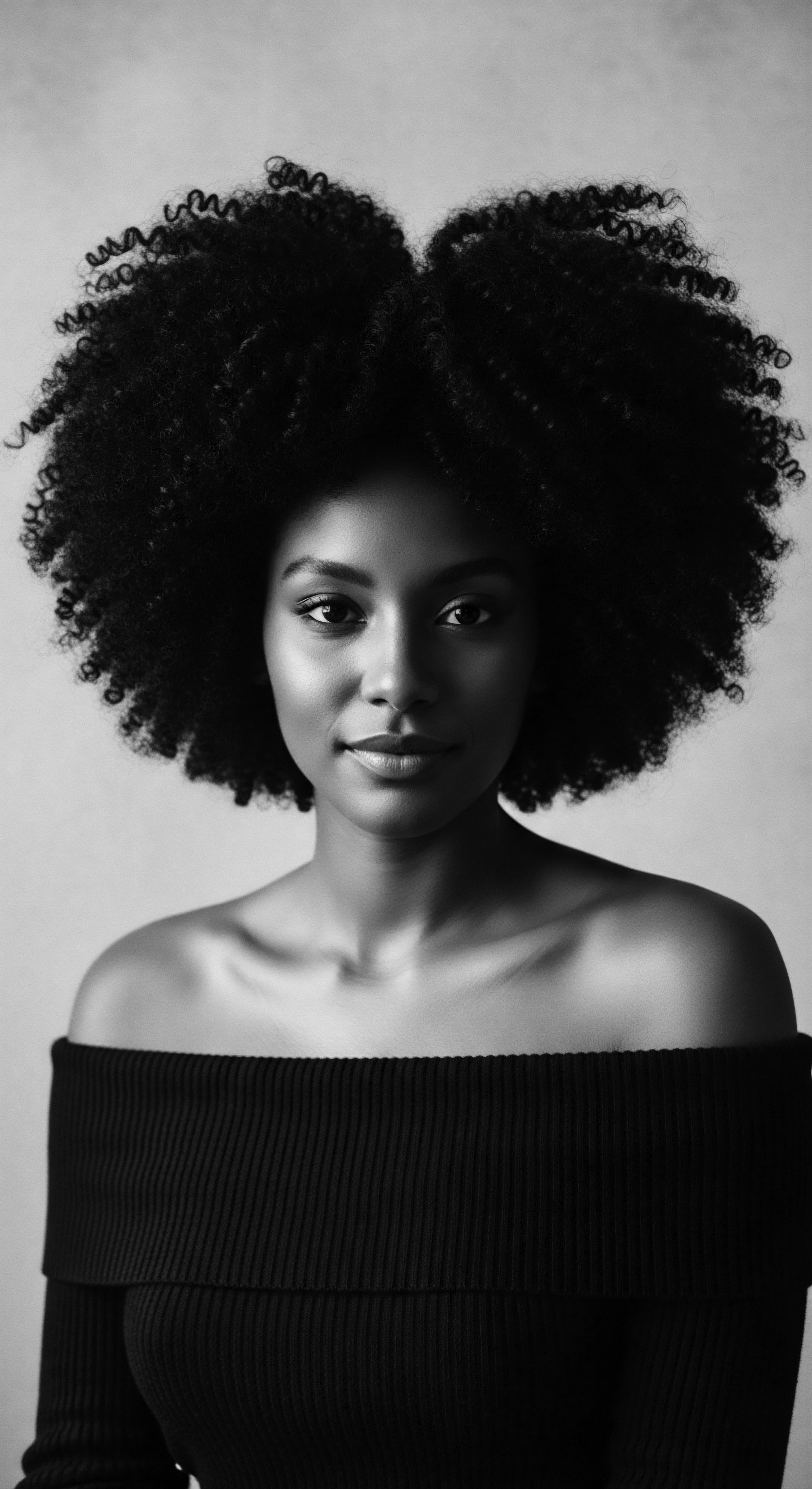
Reflection on the Heritage of Hair Health Risks
To meditate upon the heritage of Hair Health Risks for textured strands is to contemplate a saga etched in time, one that speaks of both enduring vulnerability and extraordinary resilience. It is a living, breathing archive, where each curl, coil, and wave carries the ancestral memory of sunshine, struggle, and unwavering spirit. This journey through the meaning of risks—from elemental biology to the profound systemic impacts of historical burdens—reveals a continuous thread of care, loss, and reclamation woven into the very fabric of identity. Our understanding deepens when we perceive these risks not merely as isolated incidents of damage, but as echoes of societal pressures, ancestral wisdom, and the relentless human quest for belonging and self-expression.
The Soul of a Strand whispers tales of the meticulous hands that braided and oiled hair under distant skies, safeguarding it from the elements. It recounts the painful shifts when foreign ideals began to impose new interpretations of beauty, leading to practices that, while aiming for acceptance, brought unforeseen consequences to the hair’s vitality. Yet, within this narrative of challenge, there is an equally potent story of enduring wisdom. The ancestral knowledge of protective styles, the innate understanding of moisture’s primacy, and the reverence for hair as a sacred extension of self—these traditional practices consistently offered pathways to mitigate the very risks we now articulate with scientific precision.
Looking forward, our comprehension of Hair Health Risks for textured hair must be a guiding beacon, rooted in this rich heritage. It invites us to honor the complex biological realities of our hair, while also acknowledging the deep historical and cultural forces that have shaped its vulnerability. This reflection encourages us to approach hair care with intention, informed by both the insights of modern science and the profound, often intuitive, wisdom passed down through generations.
It is a call to reconnect with the authentic meaning of hair health, one that celebrates texture, nurtures scalp and strand, and liberates the spirit from the remnants of imposed beauty standards. By doing so, we not only protect our hair from future risks, but we also uphold a legacy of self-acceptance, resilience, and the unbound beauty of our heritage.
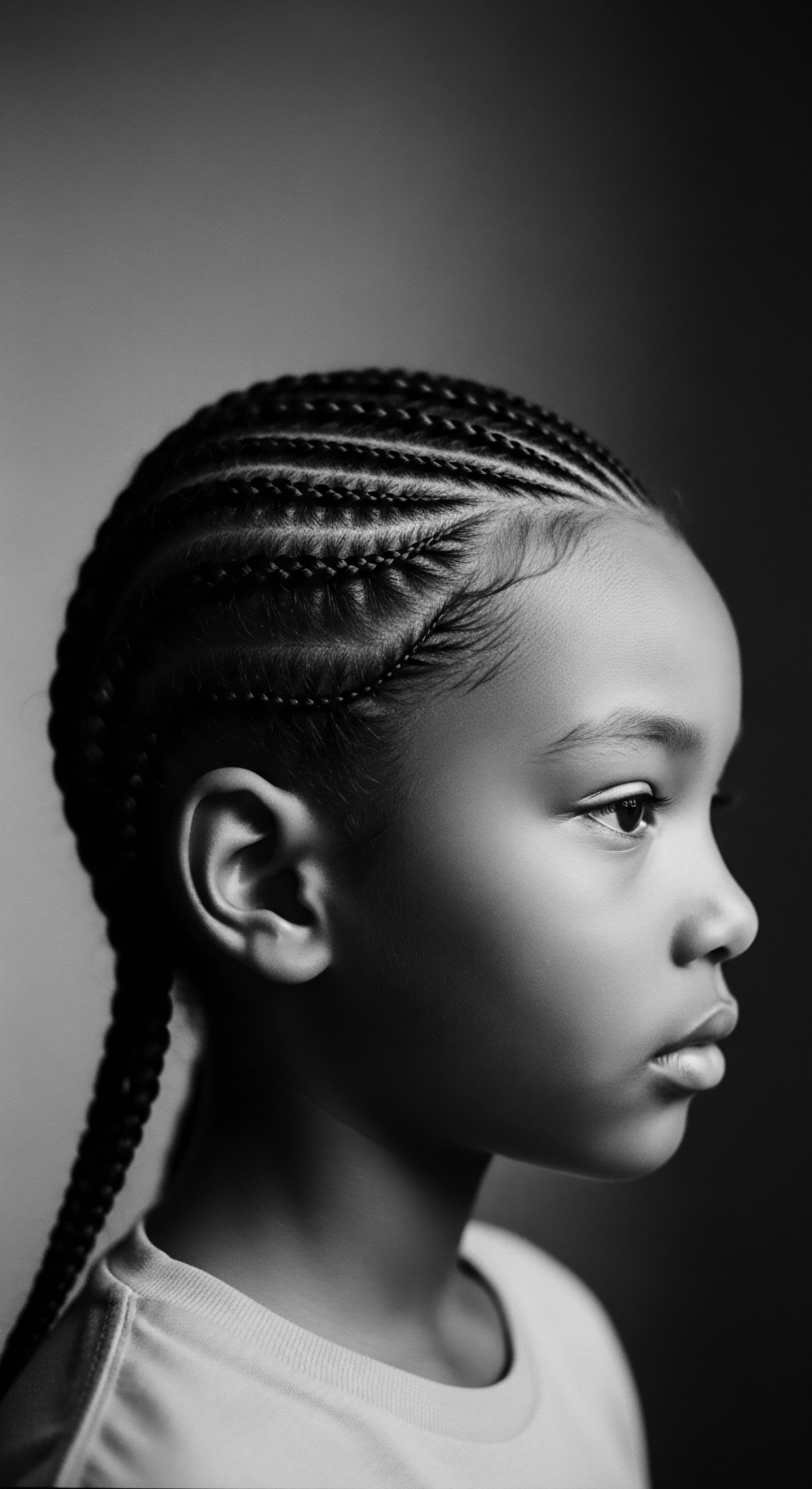
References
- Coogan, P. F. Palmer, J. R. Rosenberg, L. & Harmon, Q. J. (2021). Hair Relaxer Use and Risk of Uterine Leiomyomata in the Black Women’s Health Study. Environmental Research, 196, 110486.
- Patton, T. (2006). Hot Comb. Duke University Press.
- Byrd, A. D. & Tharps, L. D. (2014). Hair Story ❉ Untangling the Roots of Black Hair in America. St. Martin’s Press.
- Khumalo, N. P. & Gumedze, F. N. (2018). Afro-textured Hair ❉ A Study on Black Hair Morphology and the Effects of Hair Care Practices. Springer.
- Charles, C. (2019). The Psychology of Black Hair ❉ The Natural Hair Movement & Identity. Palgrave Macmillan.
- Roberson, C. (2015). The Science of Black Hair ❉ A Comprehensive Guide to Textured Hair Care. CreateSpace Independent Publishing Platform.
- Mercer, K. (1994). Welcome to the Jungle ❉ New Positions in Cultural and Identity Politics. Routledge.
